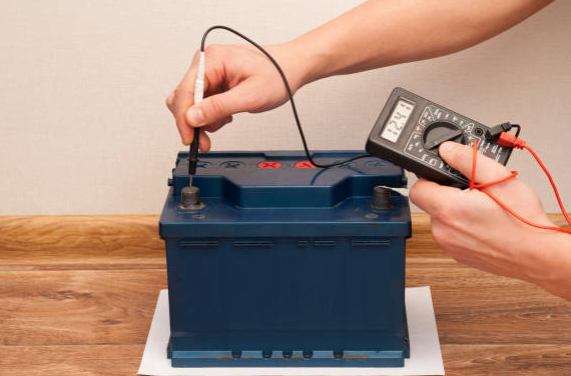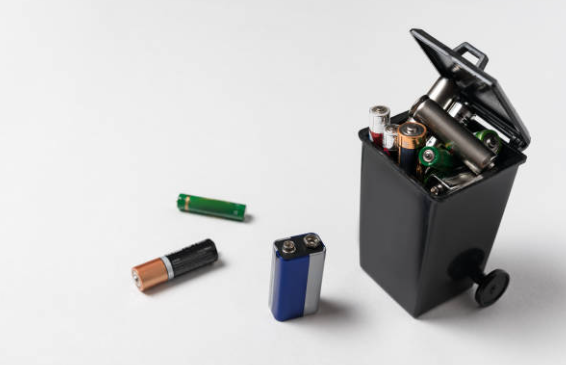Frustrated with your malfunctioning battery-powered device? Lodo autozone install batteries OK, no further! In this article, discover expert troubleshooting tips to resolve issues and have your device running smoothly again swiftly. In our fast-paced world, gadgets like smartphones, laptops, and headphones are indispensable. When they act up, it’s infuriating. But fear not! Learn basic and advanced troubleshooting techniques to diagnose and fix these problems swiftly. If you’re wondering, “Do autozone install batteries?” – we’ll address that too. Get ready to troubleshoot like a pro and enjoy your devices hassle-free!
Reasons Why Your Battery-Powered Device May Be Malfunctioning
If your battery-powered device is malfunctioning, there could be reasons why.

First, the battery itself is old and no longer holding a charge.
Secondly, double-check the settings to ensure they’re correct and not unnecessarily draining the battery.
Lastly, the device may be made with poor-quality materials or have defective parts, which can lead to malfunctions.
Old Battery
To get the most out of your battery-powered device, you’ll want to check if the battery is old and needs replacing. Over time, batteries naturally degrade and lose their ability to hold a charge. This can result in your device not working correctly or even turning on.
If you’ve had your device for a while and have noticed a decrease in battery life or performance, it’s likely that the battery is the culprit. Check your battery’s age to determine if it is old. Most batteries have a lifespan of around 2-3 years, depending on usage and quality.
Incorrect Settings
Ensure you’ve double-checked all the settings on your device, as incorrect configurations can lead to unexpected performance issues.
Start by going to the settings menu and reviewing each option thoroughly. Ensure that the power-saving mode isn’t enabled, which can limit the device’s performance to conserve battery life.
Poor Quality Materials
Consider examining the materials used in your device, as poor-quality components can contribute to subpar performance and potential issues. Regarding battery-powered devices, the materials’ quality can greatly impact their overall functionality.
Cheap or low-grade components may not be able to handle the demands of the device, leading to shorter battery life, slower performance, and even malfunctions. It is essential to ensure that the materials used in your device are of high quality and can withstand the necessary power and usage requirements.
Defective Parts
If you’re experiencing issues with your battery-powered device, it could be due to defective parts. Defective parts can cause many problems, from reduced battery life to complete device failure.
One common issue is a faulty battery. If your device isn’t holding a charge or is draining quickly, it could be because of a defective battery. In this case, the best solution would be to replace the battery with a new one.
Learn More: Battery Removal and Replacement Steps
Basic Troubleshooting Techniques
To troubleshoot your battery-powered device, check if the battery is properly inserted and charged.

Next, make sure the settings on your device are correct. For example, check the volume or display settings.
Check for any loose connections or wires that causing the malfunction.
Finally, test the device to see if the issue persists. If any further troubleshooting steps are needed, take them.
Check The Battery
One of the first things you’ll want to do is check if the battery is charged correctly. If your battery-powered device isn’t turning on or is losing power quickly, it could be a sign that the battery is low.
Start by disconnecting the device from any power sources and removing the battery if possible. Inspect the battery for any signs of damage, such as leaks or corrosion. If everything looks fine, fully charge the battery before using it again.
Ensure Settings Are Correct
Ensure you have all the right settings dialed in to keep your device running smoothly. Double-check that your device is set to the correct power-saving mode. Devices have different power-saving options, such as low or battery saver modes, which can help conserve battery life.
Adjusting the brightness level of your screen can also help extend battery life. Lowering the brightness to a comfortable level can significantly affect how long your battery lasts. Check if there are any unnecessary apps running in the background.
Check For Loose Connections
Check if any of the connections on your device are loose, as this can affect its overall performance and drain the battery quickly.
Start by inspecting the battery compartment and ensure that the battery is securely in place. If it appears loose, remove the battery and reinsert it properly, ensuring it fits snugly.
Test The Device
Examine your device closely and test it to the test to ensure it’s running smoothly and performing at its best.
Start by checking the battery level and making sure it’s charged. A low battery can cause your device to malfunction or not work at all. If the battery level is low, connect the device to a power source and let it charge for a while before testing it again.
Advanced Troubleshooting Tips
When troubleshooting an advanced issue with your battery-powered device, there are key points to consider.

First, try replacing the battery to see if that resolves the problem.
Next, thoroughly check the device for any damaged parts causing the issue.
Inspect the device for any signs of corrosion or buildup, which can also affect its functionality.
Finally, make sure to check for any debris that obstructs the device’s operation.
Replace The Battery
To ensure your device stays powered, ensure you have a fresh battery in place. Over time, batteries can lose their capacity to hold a charge, resulting in shorter battery life and frequent power outages. If you notice that your battery life is significantly shorter than before or if your device frequently shuts down even when the battery indicator shows charge remaining, it’s time to replace the battery.
Replacing the battery in a battery-powered device is usually a straightforward process. Check the user manual or manufacturer’s website for instructions specific to your device model.
Related Information: Battery Size and Compatibility Tips
Check The Device For Any Damaged Parts
Take a quick look at your device to see if there are any visible signs of damage to its parts. Check for any cracks or scratches on the screen or body of the device.
Inspect the buttons to make sure they aren’t stuck or loose. Examine the charging port and headphone jack to make sure they aren’t damaged or blocked with dirt or debris.
Inspect The Device For Corrosion
Now that you’ve checked the device for any damaged parts, it’s time to move on to the next step: inspecting the device for corrosion.
Corrosion can occur when the battery leaks or the device comes into contact with moisture. It can cause various issues, such as poor battery performance or even complete failure of the device. Therefore, carefully examining the device for any signs of corrosion is crucial.
Check The Device For Any Debris
After carefully inspecting the device for corrosion, it’s essential to check for any debris affecting its performance.
Debris can accumulate over time, especially in devices frequently used outdoors or in dusty environments. Even tiny particles like dirt, dust, or lint can obstruct the device’s ports, buttons, or connectors, reducing functionality or even complete failure.
Conclusion
In summary, troubleshooting battery-powered devices, though frustrating, is manageable with the right knowledge. Identifying common problems like drained batteries or loose connections helps pinpoint issues. Basic fixes such as checking power sources and resetting devices can solve minor problems. Yet, if basic steps don’t work, consider advanced troubleshooting like inspecting for physical damage or updating software. Always prioritize safety and consult the user manual. With patience, many issues can be resolved without costly repairs or replacements.
